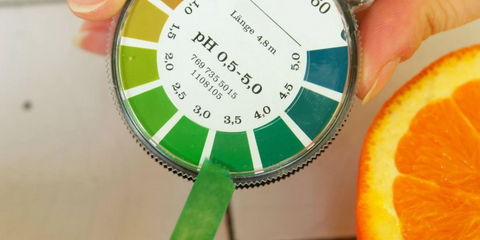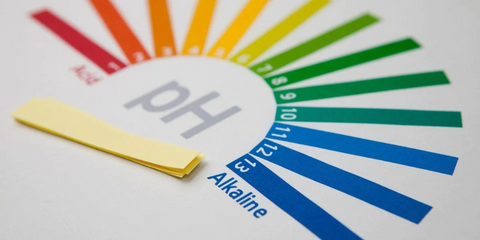Gardening is a delightful escape, a chance to reconnect with nature and find solace in the midst of our fast-paced lives. To truly unlock your garden's potential, understanding pH is essential. Let's dive into the basics.

Cracking the pH Code
pH, the measure of acidity or alkalinity, wields significant power in gardening. Ranging from 0 (most acidic) to 14 (most basic), the pH scale dictates plant happiness. Most plants revel in slightly acidic soil, boasting a pH between six and seven. But remember, there are outliers – some plants prefer a more alkaline environment, aiming for a pH between seven and eight.
pH's Garden Magic
pH isn't just a number; it's a gardener's secret weapon.
Nutrient Buffet: pH control enhances nutrient availability. Stray too far from the ideal range, and your plants may suffer deficiencies in vital minerals like iron, manganese, and zinc.
Toxic Terrain: Alkaline soils, often referred to as "sweet" soils, can harbor toxic heavy metals like aluminum and manganese when pH soars above ideal levels.
Thirst Quencher: Maintaining pH within the sweet spot ensures plants can efficiently absorb water, saving them from wilting during dry spells.
Root's Delight: Most plants revel in slightly acidic soil, promoting robust root growth and development.
Disease Shield: Some plant diseases, like powdery mildew, thrive in alkaline soils. Keeping pH within bounds can help fend off these threats.
Nature's Recycler: Soil microbes responsible for decomposing organic matter prefer a neutral to slightly acidic environment (pH six to seven). Straying from this range can slow down decomposition rates.
Soil Liberation: A lower pH can loosen compacted soils, giving roots room to breathe and improving water and air circulation.

Adjusting pH: Upward Bound
If you need to increase soil pH:
- Lime Time: Agricultural or dolomitic lime can be your pH-boosting allies. Apply it at least two weeks before planting and follow soil test recommendations.
- Ashes to Riches: Wood ashes, rich in potassium and calcium, are a natural way to increase soil pH.
- Compost's Charm: Boost pH while enriching soil with nutrients by adding organic compost.
- Pine Needle Perk: Mulch with pine needles to effectively lower soil pH; don't forget to replenish as they decompose.
Adjusting pH: Downward Spiral
For lowering soil pH:
Organic Makeover: Introduce compost or mulch into your raised beds; organic matter gradually lowers soil pH.
Acidic Aces: Acidic amendments like sulfur, aluminum sulfate, and iron sulfate from garden stores can be your go-to for pH reduction.
Plant Palette: Opt for acid-loving plants like azaleas, rhododendrons, and blueberries to naturally decrease soil pH around them.
Metal Raised Beds & pH Harmony
For Zinc-Aluminum-Magnesium stainless steel beds:
Test pH: Begin with a soil test to understand your garden's current pH level.
Lime Lifter: To raise pH, apply lime and neutralize acidity.
Sulfur Savior: For lowering pH in overly alkaline soil.
Organic Upgrade: Improve drainage and aeration with compost or well-rotted manure.
Regular Checks: Keep a close eye on pH levels with regular testing and adjustments as needed.
For galvanized steel beds, ensure zinc leaching doesn't harm your plants by lining the beds to prevent direct contact with soil.
In conclusion, pH mastery is your ticket to gardening success. Whether you're nurturing blooms or growing your own veggies, the right pH balance can transform your garden into a thriving paradise. Even metal raised beds can live in pH harmony with a little know-how. So, embrace the magic of pH, and watch your garden flourish.









